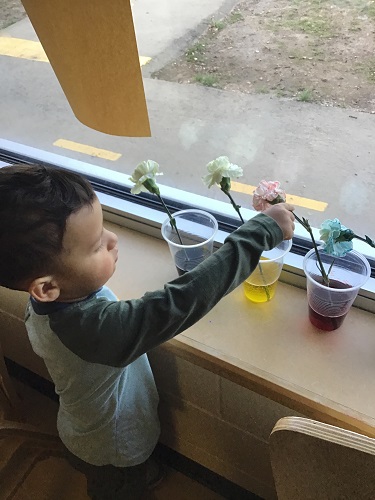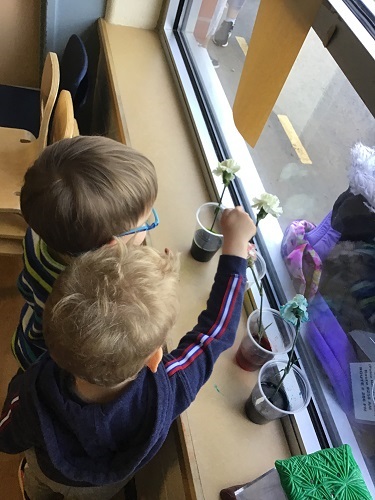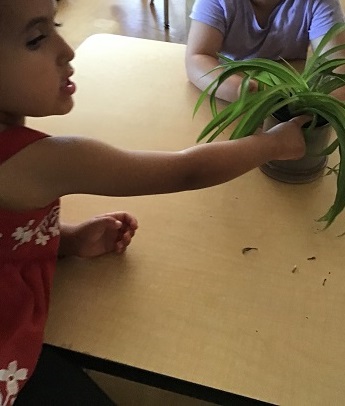For the last couple of weeks, the preschool children have been interested in learning about plants and flowers. Educator Nicole H thought it would be fun to do an experiment with white carnations, food colouring, and water.
At first the children helped fill 4 cups with water, next the children helped pour some food colouring in each cup. The colours that we used for the experiment were yellow, blue, red, and green. Lastly, Educator Nicole H cut each carnation stem so that the flowers can drink the water. After we started this experiment Educator Nicole H asked several children, “what do you think will happen to the flowers over the weekend?”. “They will change colour,” said Alice. “The flowers will grow,” said Oliver.
The following Monday the preschool children were eager to see if the flowers changed. They right away noticed that the darker the colour the more the flowers changed. Emily was very eager to see the changes in the flowers. She could identify each colour of the flowers. Right before lunch the preschool children watched a video explaining more about what happens when you cut the stem of a carnation flower. After watching the video Leo said, “When you cut the stem of the flower it drinks the water which changes the colour of the flower”. The next day Educator Nicole H put fresh water and food colouring in each cup and she cut more of the stems. The preschool children were curious to see if the carnations would change anymore. Sofia said, “I think the flowers will grow and get darker”. After doing this experiment for a week the children did very well at observing, questioning, and wondering about this experiment.
On the last day Educator Nicole H sat at the table with several children. She asked them, “What flowers absorbed the most colour?”. Sofia replied, “the yellow flower”. Lilya said, “green”. Next the children and Educator Nicole H passed the flowers around the table. Each child touched the carnations. “It feels soft,” said Grayson”. “The flowers feel soft and smooth,” agreed Lily Rose. In the end the preschool children and Educators learned that when carnations absorb food colouring and water it's called ‘capillary action’, which is the movement of water through narrow spaces due to gravity. This experiment activity has been a wonderful start at introducing plants and flowers in the preschool classroom.
Following the children’s interests, Educator Nicole H brought in a spider plant for the classroom. One day we gathered around the table and talked about the spider plant. Rumi said, “It’s a spider plant because the leaves look like spider legs”. The children and Educator Nicole H also talked about how plants need water to grow. A couple days later several children and Educator Nicole H gathered around the table with the spider plant. They all took turns passing around the plant touching the soil. All the children agreed, “the soil is dry and the spider plant needs more water”. The children have been taking turns watering the spider plant. When we have plants in the classroom it benefits the children’s emotions, behavior, independence, and health.












